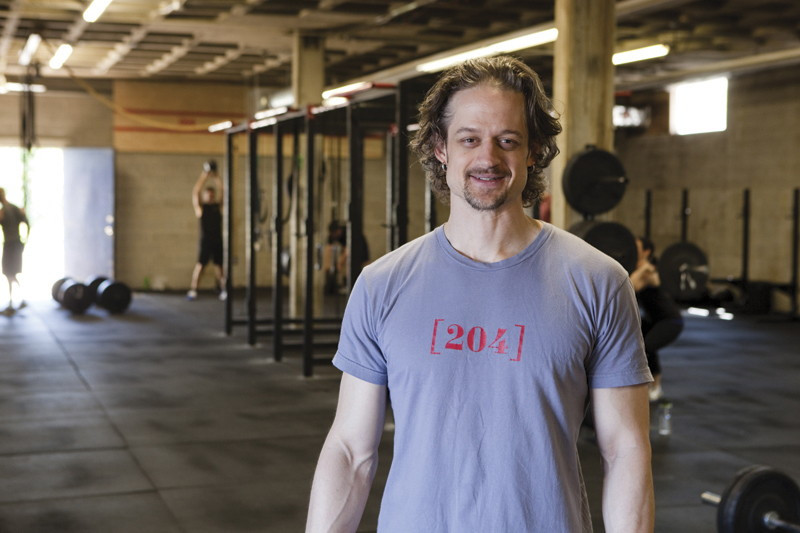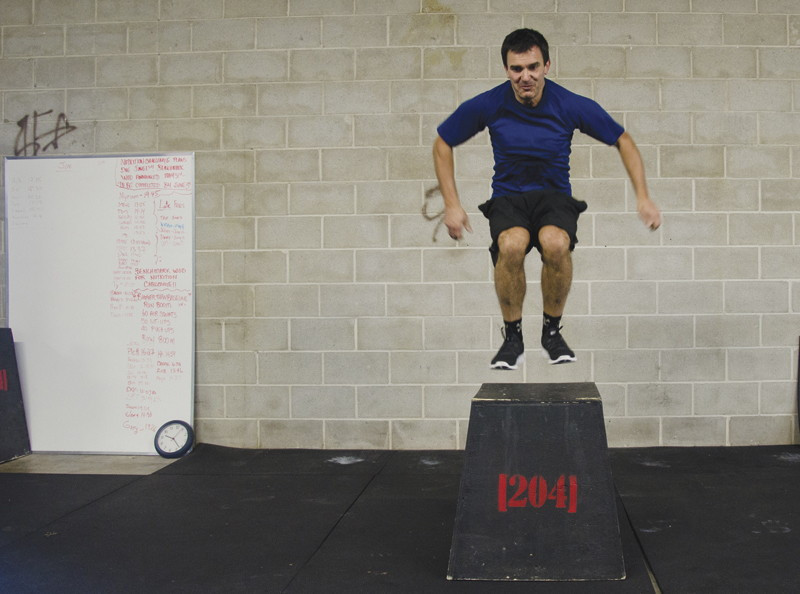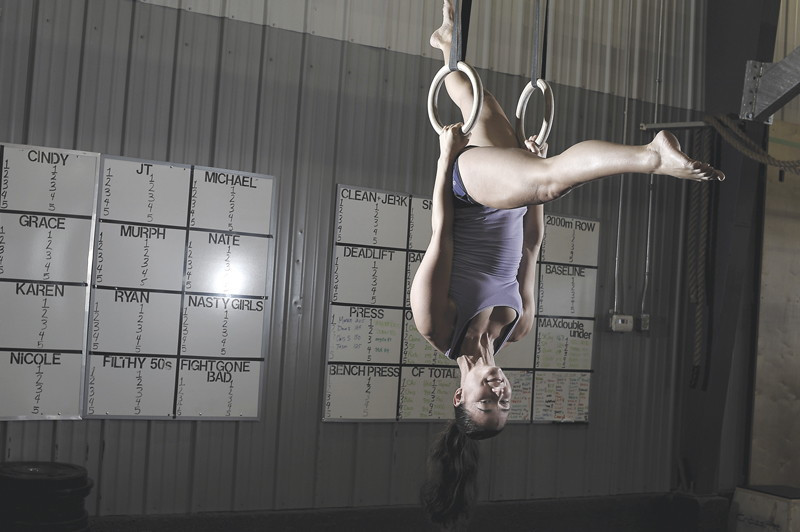CrossFit: The controversial training method and the Winnipeg community that swears by it
It’s not uncommon for friends who haven’t seen Rob Koske in a few months to walk right past him. He’s lost so much weight, they don’t even recognize him.
“They ask me, you’re not sick, are you?” says the 47-year-old aircraft mechanic, who has lost 50 pounds over the past seven months. “I am the opposite of sick. I’m feeling better now than I have in a long time.”
Koske and his wife went on a vaction to the Dominican Republic last October. Unhappy with how he looked in the pictures they took on the trip, Koske could barely bring himself to look at them.
“I was looking at some of the photos thinking, wow, I really need to do something with myself,” Koske says. He signed up for a CrossFit class, changed his diet and hasn’t looked back.
“I’ll never be a super-athlete, but I’m able to be fitter and stronger,” he says. “CrossFit has really been able to help me achieve some of these successes.”
Growing popularity
Koske is one of hundreds of Winnipeggers who flock to CrossFit gyms - or “boxes,” as CrossFit enthusiasts refer to them - multiple times each week for a strength and conditioning program that combines weightlifting, gymnastics and cardiovascular exercise. It’s a training method, sport and company created in 2000 by Greg Glassman, a former gymnast from Santa Cruz, California.
CrossFit has grown enormously in recent years, as evidenced by the success of the CrossFit Games - an annual competition where athletes from around the world gather to compete and the winning man and woman are dubbed the fittest people on Earth.
The CrossFit Games were held on a farm in California when they started in 2007. Jump ahead five years and in 2012, the CrossFit Games are being sponsored by Reebok with the male and female individual winners each taking home $250,000. The Games will be held in the Home Depot Center in Carson, California, and although they don’t happen until July 13-15, the 8,000 tickets available to spectators have been sold out since the end of May.
In Winnipeg, there are five CrossFit affiliates.
“ CrossFit makes fitness fun again. Sitting on a treadmill is boring - nobody likes it. People do it because they think they have to, but they don’t enjoy it.
Mike Warkentin, CrossFit 204
“It makes fitness fun again,” says Mike Warkentin, 35, owner of CrossFit 204 and managing editor of the CrossFit Journal, a digital publication dedicated to the training method. “Sitting on a treadmill is boring - nobody likes it. People do it because they think they have to, but they don’t enjoy it.”
CrossFit, on the other hand, is popular because it’s a constantly varied program where every workout is different.
And it works, Warkentin says.
“People can literally look at their times on the board or look at their weights and realize they’re getting better,” he says. “If you do a workout in five minutes and then three months later you do the same workout again in three minutes, I can tell you you’re fitter. It’s clear. And you know you’re fitter.”
But while many people are emerging from CrossFit boxes with stories like Koske’s - stories of weight loss, improved athletic ability and better health - some people in the fitness community are critical of how easy it is to become a certified CrossFit trainer and open an affiliate.
To receive the Level 1 CrossFit certification, all you need to do is attend a two-day seminar and then pass a 50-question multiple-choice test. You do not need any previous CrossFit experience.
To open an affiliate, all you have to do is pay a $3,000 annual fee. CrossFit HQ does not monitor affiliates and does not retest CrossFit trainers at regular intervals.
On top of that, some in the fitness community are critical of the training methods used in CrossFit. There are also boxes where overexerting one’s self to an unsafe degree is championed. Some boxes award stickers and/or t-shirts to clients who throw up during a training session.
There is also a mascot called “Uncle Rhabdo” who appears in the CrossFit community. Uncle Rhabdo is CrossFit’s term for Rhabdomyolysis, which is caused by strenuous overexertion during exercise. Rhabdomyolysis is the breakdown of muscle fibers that leads to the release of muscle fiber contents (myoglobin) into the bloodstream. Myoglobin is harmful to the kidney and often causes kidney damage.
If the stakes are so high, why is CrossFit becoming so popular?
A powerful experience
Brendan Sonnichsen recalls a time when no one else in Winnipeg was doing CrossFit. The 29-year-old paramedic first heard of the sport in 2004 while researching different training programs online. There were no Canadian CrossFit affiliates at that point, let alone any Winnipeg boxes, so he began doing WODs - the CrossFit acronym for Workout Of the Day - in his parents’ backyard that he learned about from the CrossFit website.
Sonnichsen says he was “skinny fat” before starting CrossFit. While being active in high school sports had given him a decent base of fitness, chronic wrist and neck problems from sitting and working at a computer all day were beginning to wear on him.
Since discovering CrossFit, he’s become “a fitness enthusiast, through and through.” He enjoys the challenge and he likes to test his limits.
“CrossFit competition has every single time proven to me that I can do more than I thought I could. It’s broken my limits every single time in terms of my perceptions of what I could handle,” says Sonnichsen, who used to own an affiliate called River City CrossFit. “Particularly the first competition that I ever did. It was really a very spiritual and very powerful experience for me.”
For Jason Therrien, the community he’s found at CrossFit Winnipeg, the city’s largest affiliate with 275 members, is what keeps him going back.
“There are a lot of people there I like, and the coaches definitely make it a good environment,” says the 28-year-old, who’s lost 50 pounds since starting CrossFit seven months ago. “There’s a definite contrast between that and (my) bad high school experience. Just being a geeky, overweight kid in high school gym is unpleasant.”
Karolya Vargscarr, a 27-year-old Master’s student, says CrossFit has been nothing short of life changing.
“The thing that I appreciate about CrossFit most is that it trains you to be mentally tough,” says Vargscarr, who started CrossFit to supplement her training as an amateur Muay Thai fighter. “In CrossFit you don’t get to work on what you’re good at, or practice the same routine every day that you like and are used to, you do something different that is guaranteed to be physically uncomfortable and mentally stressful - that’s why people get such impressive physical results.”
When you get used to being uncomfortable, after awhile you see it “bleed into the rest of your life,” Vargscarr adds.
“When you embrace the idea of bettering yourself and can accept being uncomfortable with a greater goal in mind, I think it makes you a stronger person,” she says. “I know the mental toughness aspect of CrossFit will help me when I return to Muay Thai, but also in other areas (like finishing) my thesis and moving on to other challenges in life.”
Some concerns
But for all the good CrossFit is doing, criticisms still remain. For one, there’s the ease with which people can get their Level 1 CrossFit certification.
“I would be concerned” if that’s all the training a coach has, says Stephanie Jeffrey, executive director of the Manitoba Fitness Council, a non-profit that trains and accredits fitness leaders in Manitoba.
Warkentin from CrossFit 204 believes it’s up to the client to research what sort of trainer they’re working with before committing to a gym.
“Ultimately, what you’re looking for in a trainer is good coaching,” he says. “You should look at their certifications, but you should also evaluate that trainer. If you immediately walk in and (the trainer) has no idea know what he’s doing, you shouldn’t work out there. I’ve seen guys with five or 10 certifications that probably shouldn’t be personal trainers, and on the other side of it, I’ve seen people with just a Level 1 CrossFit certification that they got over a weekend that are excellent trainers.”
While injury is never the goal, it is inevitable, Sonnichsen says.
“CrossFit will injure everybody at some point in their practice of it, because it will exploit every single weakness, every single movement dysfunction (you) have,” he says. “But, it’s the most effective system for finding out what your movement ineptitudes are before you lose the ability to move that way (forever).”
Then there’s the matter of people being rewarded for pushing themselves so hard they throw up.
“Some people think it’s a badge of honour,” Vargscarr says, adding that while there are puke pails in the box she trains at, it’s never the goal of a workout.
“The culture is, ‘Right on, way to puke,’” she says. “But it’s more because people recognize … you went all out. You put it all out on the table and you didn’t hold back. I think that’s where the admiration comes from.”
Warkentin says he would never recommend anyone push themself so hard that they get hurt, and how far clients want to push themselves depends on their level of ability and their goals.
“Our goal is to push you to a point where you’re going to get the right fitness benefit and the optimal gains from the program, but not into extreme discomfort,” he says.
Just a trend?
Kyle Turcotte, a strength and conditioning specialist at Canadian Sport Centre Manitoba who teaches courses in fitness assessment and exercise prescription at the University of Manitoba says that whether or not CrossFit is for you depends on your goals.
“If your goal is to lose weight, you may see some benefits from it,” he says. “If you’re an athlete, you need to look at a variety of different training (methods).”
Turcotte says CrossFit comes up in one of the classes he teaches at the U of M when he’s discussing fitness trends.
“It’s a fitness trend, really,” he says. “You’re just looking at different ways of applying exercise in the end. It’s about how you go about applying it, and they’re just applying it in a different way. It’s no different from any other fitness trend that has come along.”
But for those who do CrossFit, it’s more than a trend - it’s a lifestyle.
And it’s a lifestyle that’s spreading across the globe. Warkentin recently traveled to Kenya with Glassman to visit a variety of humanitarian initiatives CrossFit, Inc. supports.
“CrossFit, especially in the eyes of its founder, is not just a fitness program, it’s kind of a lifestyle program,” Warkentin says. “Anyone who has done a lot of research on fitness will tell you, if you just work out, that’s only half the battle because you have to combine that with nutrition and (proper) lifestyle choices. If you combine an entire lifestyle, you can make some significant changes.”
Tania Tétrault Vrga, the founder and head trainer of CrossFit Winnipeg, believes CrossFit is positive because the aesthetic results are secondary to the increase in one’s physical abilities.
“People are interested in increasing their performance and along the road they realize they lost 20 pounds and they’ve become really bad-ass,” the 35-year-old says. “That idea of doing something you never thought you could do, and now you’re doing it - there’s nothing more motivating than that.”
Vargscarr adds that the world of CrossFit has given women positive female role models to look up to.
“It’s nice to have strong women who are working hard in every area of their lives as role models, to admire their work ethic and skills,” she says, “rather than the way they look in a bikini.”
Barb Herda-Cajas, owner of CORE Training & Therapy and an instructor in the University of Winnipeg’s kinesiology department says that whether it’s a fad or not, if people find that CrossFit works for them, it’s a good thing.
“If people are doing the programming and getting injured and turned off from fitness, I would see that as problematic,” she says, noting that some of the clients that work out at CORE do CrossFit workouts.
“(But) we have a problem not just in Manitoba but across Canada of obesity and medical-related problems - people not taking care of their bodies. If people find CrossFit useful and something that they’re capable of doing, and it motivates them to move their body on a regular basis and helps keep them out of the medical system, I think it’s fabulous.”
“What is CrossFit?” video from CrossFit Headquarters.
Highlights from the 2011 CrossFit Games.
Published in Volume 66, Number 28 of The Uniter (June 27, 2012)









